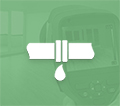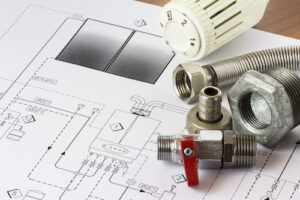The Ideal Residential Plumbing Inspections Checklist
In addition to being stressful, plumbing problems can also be very expensive and time-consuming to fix. Not to mention how much discomfort they can cause your family.
Today at 1st Choice Plumbing, Flood & Restoration, we want to give you the ideal checklist you can use to check your home’s plumbing and make sure it’s always in good condition.
Plumbing problems sometimes abruptly get so bad that they almost count as catastrophic. However, regular inspections of your important plumbing fixtures can help you spot new problems and take care of them before they become emergencies.
Naturally, you should focus your inspection checklist on the bathroom and kitchen since they have the most plumbing fixtures. Don’t forget to check the rest of the house as well, including the water heater in the utility room or basement and the hose spigots outside.
Let’s begin our checklist in one of your home’s most significant and frequently used rooms.
Bathrooms
Since everyone in the family uses the bathroom frequently, it stands to reason that plumbing problems are most likely to occur here.
The sink, tub, and shower faucets in the bathroom are the ones that need regular maintenance. Check them frequently for leaks. Replace worn washers or cartridges to stop leaky faucets. Water supply lines hidden in the walls for tub and shower drains can be a particular hazard because such covert leaks can cause significant damage before you notice them.
One common sign of concealed water pipe leaks is water damage in the chamber below the plumbing pipes. Watch how the faucets operate as you run the water. Calcium buildup on the aerator may occur if you notice low water pressure or an unusual spray pattern. Aerators can either be physically taken apart and cleaned, or calcium buildup can be removed by soaking in vinegar.
Drains
Hair and soap buildup frequently clogs the drains in bathroom sinks, tubs, and showers. You should routinely use boiling water to unclog the drain or another DIY method, use a drain blocker, and remove hair and debris from the tub or drain blocker as soon as you can instead of waiting for these to completely obstruct the drain.
Toilets
Every one of the various parts that make up a toilet has the potential to wear out and cause problems. Watch what happens when you remove the tank cover and flush the toilet. When a toilet doesn’t shut off after the flush cycle is finished, a lot of water is wasted. Often, fixing a running toilet is surprisingly easy. If your toilet moves slightly when you sit on it or you notice water seeping around its base, it’s possible that the wax ring that seals the toilet base to the drain opening has worn out and needs to be replaced.
Kitchen
Believe it or not, your kitchen is the second-most used room in your house. In addition to being a room where delicious meals are prepared and where your family gathers to spend quality time together, the kitchen is also a room with a lot of plumbing fixtures. At least twice a year, inspect every fixture and fix any problems you find.
Sink Drains
The kitchen sink is frequently used, and as a result, the strainer frequently leaks. Watch the P-trap and strainer area as the water in the sink empties. The P-trap fittings may need to be tightened or replaced if the strainer basket begins to leak or corrode. Sinks that drain too slowly may have a clog developing in the P-trap or branch drain; these fittings can be disassembled and cleaned out. Clean the kitchen sink’s drain on a regular basis. You can help break up the typical buildup in your kitchen sink drain and keep the water flowing by regularly running baking soda, vinegar, and water through it.
Faucets
A leaky kitchen faucet, which can quietly waste hundreds of gallons of water annually, is the most common plumbing repair. Pay close attention to your faucet as you pull the lever and make any necessary repairs.
Reversing Valves
The water supply to the sink faucet, dishwasher, and refrigerator water lines are controlled by the fixture shutdown valves, which are made to stop the flow of water when they are closed. Throughout your check, shut the valves firmly and make sure they operate as intended. If they don’t completely stop the water flow, they need to be replaced.
Disposal Device
Issues are found at the drain connections where a dishwasher discharge connects to the disposer and flows to the sink. Examine them, tighten the connections, or replace the gaskets if these points show leakage. a foul-smelling garbage disposal that needs to be cleaned. Follow the manufacturer’s recommendations for routine garbage disposal maintenance.
Dishwasher
During your inspection tour, take some time to listen to and observe the dishwasher. A problem with the water supply line or the shutoff valve that controls it may be the cause of a dishwasher that fills slowly. Check the water discharge hose for clogs or pinching if the dishwasher drains slowly or if there is drain water left in the bottom of the dishwasher after the cycle is complete.
The Rest Of Your House
The toilet, kitchen, and sewer systems are the three main plumbing fixtures, but you should also regularly check your irrigation system, washing machine, and outdoor hose spigots for problems. Last but not least, check your water heater.
Need An Expert?
Please call 866-437-0205 and speak to a member of the 1st Choice Plumbing, Flood & Restoration team right away if you have a plumbing problem inside your home and need assistance fixing it or if you’d like a plumbing expert to help you inspect your home for potential plumbing problems.










